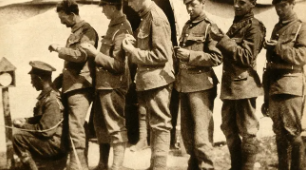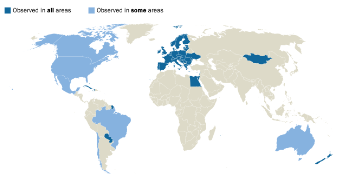At 2 a.m. on March 9, clocks around the world will move forward an hour. This widely known practice is called daylight saving time. Every year on the second Sunday of March, the clocks are moved forward so people can make better use of daylight.
The idea of daylight saving time came to be in the 18th century. The idea was suggested by Benjamin Franklin, one of the founding fathers of the United States. Franklin noticed that the use of daylight saving time allowed for more hours of daylight. This was crucial during the 18th century as modern technology was not invented yet. To keep houses bright, people had to use candles.
By adding another hour of daylight, Franklin was able to use fewer candles, which helped save energy. Franklin, along with two others, George Bernard Hudson, an astronomer, and William Willett, a builder, agreed on the idea of daylight saving time. Willet even introduced the idea of the time change to the British Parliament, which was rejected.

The three found that not only did daylight saving time impose benefits for the people, but years later, during World War I, the idea of an extra hour of daylight had been brought up again. According to David Prerau, a computer scientist, during World War I many countries, such as Germany, adopted the idea of saving energy during the war.
Around the world, countries cumulatively adopted the idea of daylight saving time. The United States acknowledged the idea in 1996 by imposing a law called the Uniform Time Act, which ordered a unified time across the United States.
Some countries, however, do not play into daylight saving time. Only about one third of the countries in the world practice daylight saving time. While Europe and North America acknowledge the existence of daylight saving time, major countries such as Russia and Turkey don’t acknowledge its existence anymore.

Many countries use to practice daylight saving time, but stopped. For example, in 2022, Mexico declared that they will no longer be using daylight saving time. In the last decade, numerous countries have dropped daylight saving as it has been viewed to have no profound benefits anymore.
In Africa, Egypt is the only country that still practices daylight saving time. Even in the United States, places such as Hawaii and parts of Arizona, no longer participate in daylight saving time.
It is a growing concern for many, that daylight saving time has no true benefits anymore. Originally acknowledged to help save energy, daylight saving time is much more than just an hour change.
According to Adam Spira, a sleep expert, he found that daylight saving time contributes to increased health risks. Scientific evidence proved that just losing an hour leads to increased risks of heart attack and stroke.
Something so seemingly small has many other disadvantages, too. Hospitals have been reported to have an increased amount of hospital admissions.
Daylight saving time has also been connected to an increased amount of traffic accidents. A study done in 2020 proved that daylight saving time increases the risk of car accidents by 6%.
Not only has daylight saving time contributed to an odd number of problems, but it is ineffective in limiting the usage of energy. This act was originally put into place to conserve energy and money because they would not have to use as many candles. Now, daylight saving time does not conserve energy because as technology has evolved, lighting does not require as much energy as it did previously.
Currently, the world is split on whether or not daylight saving time should be permanently removed. In the meantime, however, many steps can be taken to help prevent personal health risks connected to the time change. Focusing on transitioning sleep schedules earlier to prevent the impact of the change can help a lot for those struggling with losing an hour of sleep.




































Melanie Faulk • Feb 21, 2025 at 7:39 pm
Love daylight savings time. Springing forward. Need to stay in daylight savings time.